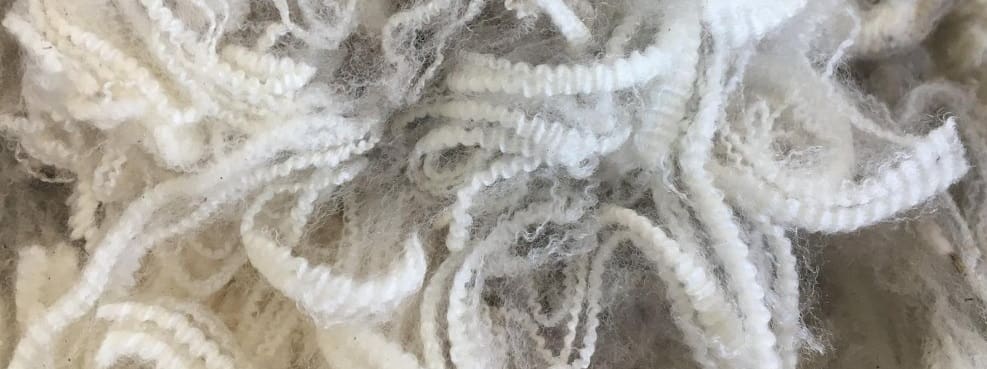
LOWER quality wools and an unfavourable $A-US exchange rate combined to force Australia’s wool price benchmark down further this week, although lines of good specification continued to hold value.
Prices generally dropped for the fourth consecutive week, with the benchmark AWEX Eastern Market Indicator falling 16 cents for the series, to close at 1963c/kg clean.
AWEX senior market analyst Lionel Plunkett said due to the strengthening of the Australian dollar against the American currency — it got as high as US71.62 cents on Thursday, its highest level since the 27 February. When viewed in $US terms, the EMI rose by 5 cents to US1403 cents.
Mr Plunkett said the supply of good style wool continued to diminish this week, in particular those with favourable additional measurement results, which attracted excellent competition and as a result recorded minimal losses.
“However, due to seasonal conditions, a large part of the offering was lower style types, many of which also possessed poor additional measurement results.
“Wool with styles 6 and 7, made up 15.4 percent of the Merino fleece offering, the highest level since June 2010,” he said.
“Due to the prevalence of these wools, buyers have again struggled to average them into their purchases.
“The result was the continued discounting of these types as the series progressed, by sales end the prices being achieved on these lower style types was generally 20 to 40 cents below those achieved at the previous week’s sale,” he said.
“It was these price reductions that were the driving force behind the losses recorded in the individual Micron Price Guides (MPGs).”
Mr Plunkett said the skirting market behaved similarly to the fleece, and better style lots with less than 3pc vegetable matter (vm) were keenly sought after and were generally only 20 to 30 cents easier.
“Buyers were less keen on the lesser style wools and lots carrying in excess of 5pc vm, and as a result these types fell by 50 to 80 cents.”
The crossbreds defied the trend of the other sectors, managing to record small gains for the series, generally between 10 and 20 cents, he said.
Quality of clip is declining AWI
Australian Wool Innovation’s weekly market report said the quality of the freshly shorn Australian wool clip is unfortunately declining.
“The relentless and on-going drought across a large part of the nation continues to negatively impact upon wool quality.
“Large proportions of the New South Wales and South Australian clips are all influenced negatively to some degree,” AWI said.
“This predominantly effects yields.
“The largest single discount in the market presently is for sale lots less than around 58pc dry combing yield.”
AWI said other growing discount categories are also the high PobM (and by extension a higher calculated CVHpc) and inferior staple strength of less than 23 Newtons per kilotex.
“Many drought-affected clips are now registering average dry yields of less than 60pc and in some cases, less than 50pc.
“Low yields and dust penetration becomes an issue in scouring as water replacement frequency increases and sludge disposal costs escalates.”
AWI said there are no issues further up the processing chain if effective scouring is achieved. Those scouring top makers able to accommodate these wools can take full advantage of the current discounts available.
“Remarkably, many of these lower yielding clips otherwise have very acceptable processing attributes such as good tensile strength, low vegetable matter (vm) content and lengths still suitable for wool top manufacturing for worsted yarns.”
AWI said all Merino fleece types of good to better test readings were largely unchanged to slightly dearer for the week.
“Following a strong opening day which saw these wools gain upward of 15c/kg, the stronger $A on the final day resulted in prices softening towards the opening levels.
“What brought down the overall market though was the 40-cent falls on the lower specification sale lots.
Auction supply helped by shearing of dispersal sheep
AWI said current auction volumes have been supported by many growers having to shear and sell their sheep due to the rising and ongoing costs of maintaining their animals in drought areas.
“Failure of any significant rains to encourage pasture growth or any positive forecasts prior to winter has led to this.
“Most brokers are reporting a precipice in offered wool is fast approaching.”
South African prices improve with Chinese buying
AWI said the South African sales sold to a vastly better tone this week and the local values showed a 0.9pc increase overall on the Cape Wools Indicator.
“Assistance was provided by a weaker foreign exchange (forex) rate which ultimately saw prices weaker in US dollar equivalents.
“Strong buying activity from Chinese interests re-emerged to reinvigorate the market with some sense of stability.”
With about 39,000 bales rostered to sell in Australia next week, AWI said encouraging signs emerged this week across most of the better type sections, indicating the possibility of consolidation is not that far off.



HAVE YOUR SAY